Editor’s Note: Originally published on Sep. 29, 2020, updated on Mar. 9, 2023.

Thinking about starting an online bookselling business? But are you sure you know what it takes? When in doubt, follow our blog. Today we’ll be looking at the cost of selling books on Amazon – with examples, charts, and other handy little resources.
The topic of selling books on ‘The Everything Store’ isn’t new to us. In our Quick Start Guide for booksellers, we discussed the basics of and touched on a very important topic: the cost of selling books on Amazon. Today we delve deeper.
Individual Vs. Professional Selling Plan
There are two types of selling plans available on Amazon: Individual and Professional. The Pro plan is the default option when you sign up for an account on Amazon. Selling fees tend to be similar across all of Amazon’s 18 venues, and they’ve been the same for years.
The “Individual” one isn’t really a “plan”, but more of a pay-as-you-go type of deal. You pay Amazon $0.99 in selling fees for every unit sold. In return, you get to list items to sell on Amazon. And you also gain access to the Fulfilled by Amazon (FBA) program, should you wish to outsource your sales.
The second option is the “Professional” plan (a.k.a the “Pro” plan), which comes with a monthly selling fee of $39.99. If you want to sell on the Handmade or Launchpad platforms, this is the way to go. It’s also your only option if you plan to sell restricted products.
The perks of a Pro account are listed below. They include access to advertisingAdvertising is a means of communication … More, promotions (e.g. free shipping), bulk uploads, feeds, Business customers, and API integration. If you sell more than 40 items a month, it makes sense to switch to the Pro plan rather than pay more in per-item fees (>40 x $0.99).
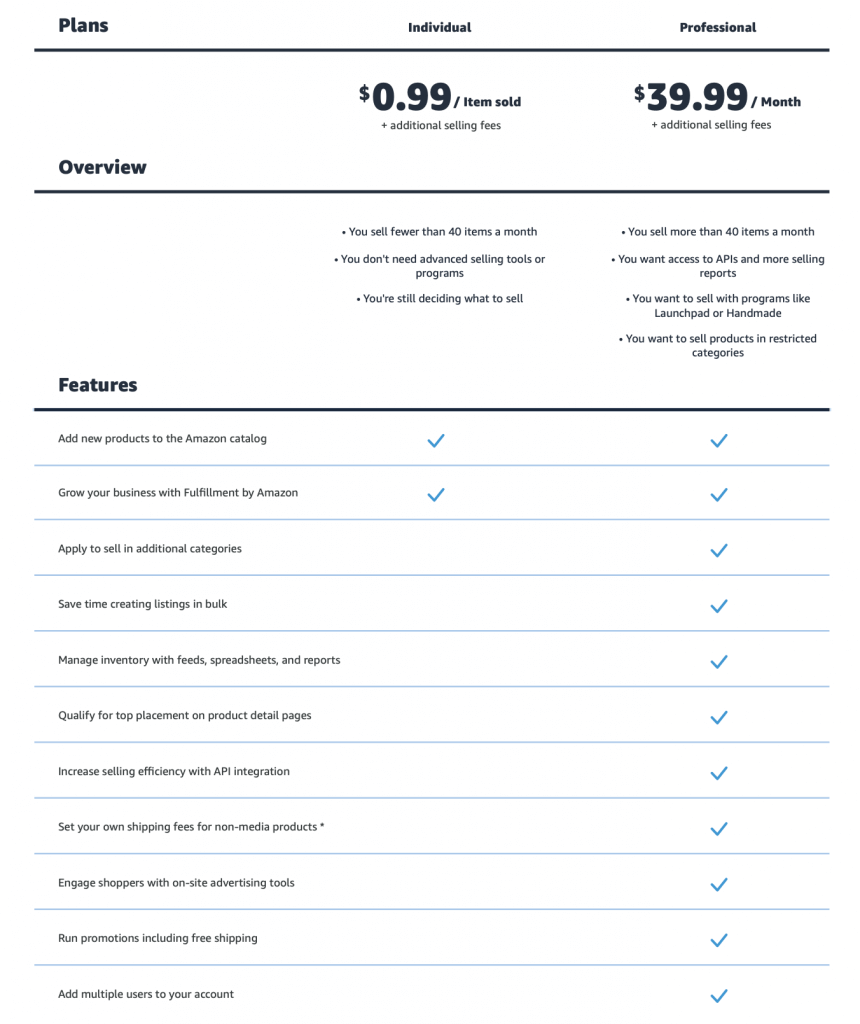
You can switch between plans anytime using the Downgrade/Upgrade option on your Account > My Services page in Seller CentralAmazon Seller Central is a portal or a h… More, as seen below. But your choice may impact your profits. It’s best to downgrade towards the end of your subscription period to avoid paying unexpected per-item fees.
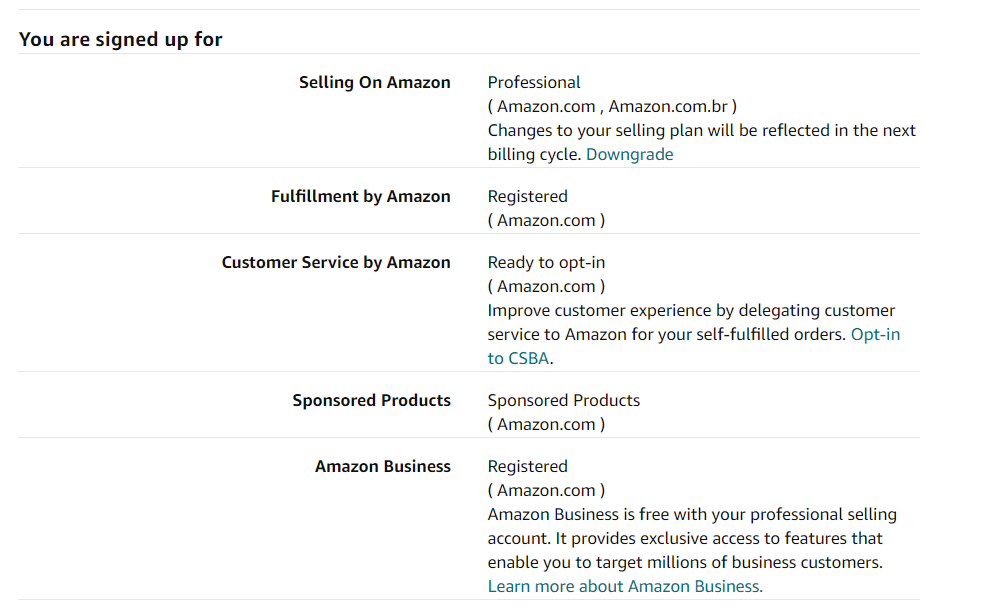
Cost of Selling Books on Amazon via FBM, FBA, and SFP
On Amazon, you’re free to fulfill your orders yourself or outsource to Amazon. The first option is called Fulfillment by Merchant (FBM)Seller lingo for when the Amazon third-p… More, and it’s part of the Merchant Fulfilled Network (MFN) of services available to third-party sellers (3PThird-party sellers are independent indi… More).
The second option, available to sellers as well as vendors (‘1P’ merchants) is Fulfilled by Amazon (FBA). It involves sending inventory to Amazon’s fulfillment centers. From then on, Amazon handles all aspects of the order, including shipping, customer service, and refunds.
There’s a third, in-between option as well. It’s called Seller-Fulfilled Prime (SFP). It enables eligible sellers to use the Prime badge but also fulfill their own orders. They ship to domestic Prime members from their own warehouse using pre-approved couriers.
Orders Fulfilled by the Seller (FBM)
Books are part of the BMVD category (Books, Music, Video, and DVD), or ‘media’ for short. As such, they come with fixed shipping rates (what the US customer pays for shipping) or shipping credits (UK). They usually cover the seller’s cost to ship the book, but they’re nowhere near enough for heavy books.
To give you an idea of what you would expect to pay to ship a book to your buyer, look at the table below showing the current Media Mail rates for retailers. Together with their packaging, most books weigh 1 lb. (16 ounces / 0.45kg) or less, so you would pay the USPS $2.80 to deliver them.
If the buyer paid you $3.99 for Standard Shipping, this shipment is within budget. But if you wanted to ship a book weighing more than 3 lbs. (48 ounces / 1.36kg), you’d be out of pocket. Unless you have a Pro account and you set your own shipping rates, you’d need to offset this loss by raising the price.
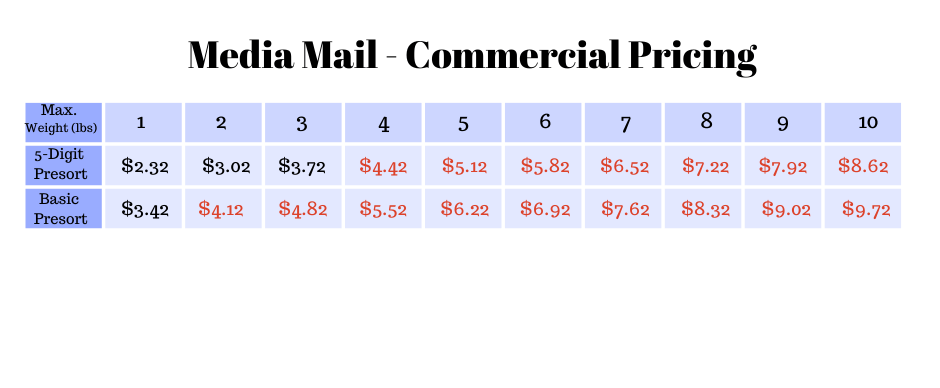
…which brings us to pricing. Assuming the book is light, you should try to price it so that it covers Amazon’s fees, at the very least. Here are some of Amazon’s fees for items listed in the Books category, based on the current Selling on Amazon Fee Schedule:
- Referral fee of 15% of total sale price (item price + delivery charges) or $0.3/item – whichever is higher.
- Closing fee of $1.8 only applied to media items (per sale, not unit).
- Refund Administration Fee, which is $5.00 or 20% of the referral fee – whichever is less.
- Monthly high-volume listing fee of $0.001 per ASIN for listings above the 1.5 mil. free limit.
- Rental book service fee of USD $5.00, if applicable.
Most booksellers are charged referral and closing fees only. Notice that the referral fee is charged based on the total sale price, which usually includes optional extras like gift wrapping. Unfortunately for booksellers, Managing Gift Options is not available for media products. So, gift wrapping is on you.
Also, you should know that fees vary by venue. For instance, Amazon UK currently charges a £0.5 closing fee. It waives the high-volume listing fee for media items. As for the referral fee, it’s either 15.3% or 5.1% (only if total sale price is under £5).
To get an idea of what you could hope to make by selling a book on Amazon, try using the Revenue Calculator. It displays Amazon fees like referral, closing, and per-item fees. In this case, they total $3.98.
To get a real sense of the profit you can expect if you opt for MFN fulfillment, you should also include source price, picking and packing, shipping materials, shipping cost, and CS costs in the Cost of Goods Sold section. You should keep these FBM costs below $3.97/unit to stay in the green.
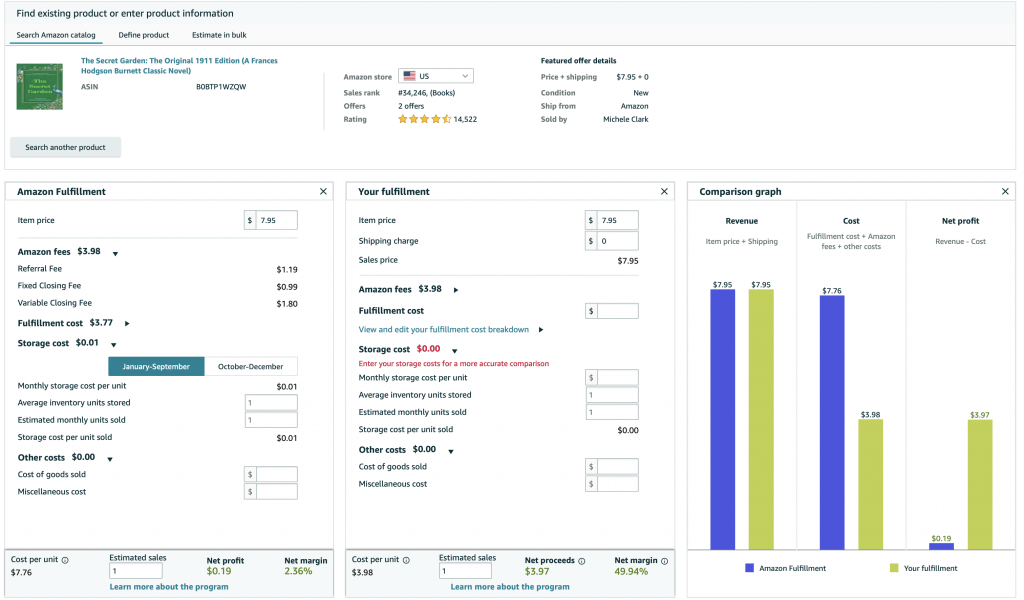
When you’re trying to set your listing price, consider not just the margin you want, but also the markup you need. Whereas your margin reflects your profit based on selling price, your markup shows how well you’ve done based on your costs (real or anticipated), such as overheads and labor.
Your markup should also take into account things like upcoming fee changes. For instance, Amazon UK sellers are charged a 2% Digital Services Tax on referral and other fees since March 2020, and savvy sellers should be ready to adjust their markups to reflect changes like these.
Orders Fulfilled by Amazon (FBA)
Switching from FBM to FBA can be cost-effective for light and popular books. But if you decide to ship a few units to a fulfillment center and let Amazon handle those orders for you, you should first learn about FBA fees.
Using the Revenue Calculator as shown above, we can see that FBA Fulfillment Costs and monthly storage total $3.78/unit. We could then add the cost of sourcing it, picking and packing, labor-intensive FBA shipment prep, the cost of bulk shipping to FBA, and storing it at a fulfillment center.
For this particular book, FBM could be more cost-effective, if the seller brought that unit cost down to under $3.78. And even if they can’t do that, they would still avoid Amazon fulfillment fees, storage costs, and bulk shipping overheads.
Also, FBA fees can snowball in time. Unlike FBM fees, which are one-off fees charged with each sale, some FBA fees are based on storage limits, the age of the inventory, and compliance with Amazon’s packaging, labeling, and shipping rules. Here is a breakdown of these additional FBA fees:
- Size-based FBA fulfillment fee of $3.22, at the very least.
- Monthly storage fee of $2.40 per cubic foot in Q4 and $0.87 the rest of the year.
- Aged inventory surcharge from $0.5/month per cubic foot.
- Removal order fees of $0.97 per unit, at least.
- Optional Manual Processing fee of $0.3 in Nov. and Dec., but $0.15 otherwise.
- Optional Planned Prep Service fee of at least $0.8 per unit.
- Optional FBA Label Service fee of $0.55 per unit.
- Unplanned Prep Service, which can cost $0.2 to $2 per unit.
- Returns processing fee equal to fulfillment fees.
- Overage fee of $10 for every extra cubic foot.
Seller-Fulfilled Prime (SFP) Orders
With the third option, SFP, you offer your books as Prime listings with free shipping and guaranteed delivery dates. Amazon handles post-order customer support. But you fulfill your orders yourself, covering the usual FBM costs as well as that of shipping your item with a pre-approved courier.
Also, Amazon handles all the returns and refunds on your behalf with a generous, no-fuss policy. It makes you liable for return costs and return administration fees in most cases. Policy changes like the ‘no box’ returns update may also apply to SFP orders someday, raising return costs even more due to damage and mix-ups.
Choosing a Fulfillment Channel on Amazon
If you’re wondering how to sell books on Amazon for a profit, you have plenty of options. With well-packed, timed, and priced shipments, you can expect to run an FBA-only business smoothly. Likewise, you could try an FBM-FBA or FBA-SFP hybrid model, deciding on a case-by-case basis how to fulfill each unit.
Luckily, SellerEngine has developed software products that can help mitigate the cost of selling books on Amazon. Whether it’s sourcing items for FBA/FBM fulfillment via the Profit Bandit scouting app, creating FBA shipments in a flash with SellerEngine Plus, or getting the best of your competitors with BuyBoxBuddy, our tools are with you every step of the way.
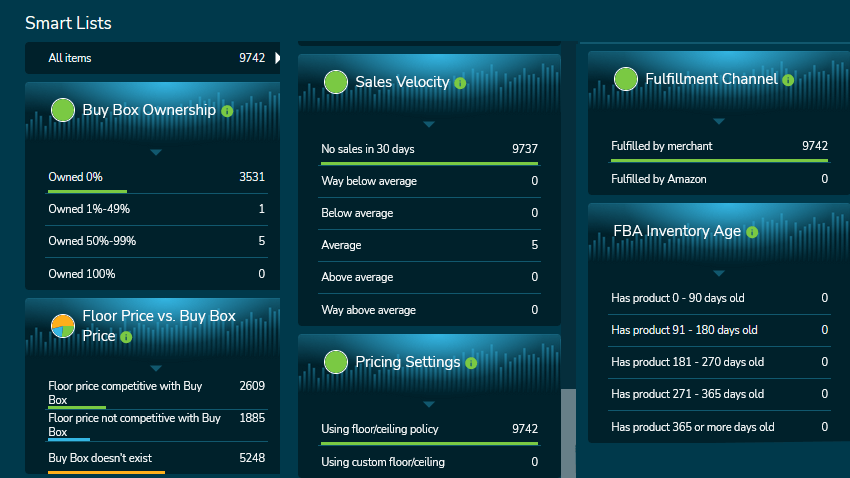
When you use BuyBoxBuddy, you can see lists of your FBA and FBM items with a simple click. It also shows you a breakdown of the items in your FBA inventory, grouped by age, so that you can anticipate and avoid storage costs. With insights into Buy BoxThis refers to the situation where a sel… More ownership, price points, and sales velocity, there’s nothing stopping you from making a bundle selling books on Amazon.

Melanie takes an active interest in all things Amazon. She keeps an eye on the latest developments and keeps Amazon sellers up to speed.





3 Responses
Everywhere someone is saying how easy it is to sell books on Amazon, use apps, where to buy books, etc., but no one says that Amazon doesn’t allow sellers to sell most profit books. There is a mountain of books that Amazon doesn’t even allow sellers to unlock/ungate, it just displays the message “not available” to sell.
Hello,
Thank you very much for your comment. I agree how frustrating this is and while generally, books are not a gated category, it is true that in recent times Amazon has enforced more rules regarding what they call popular books. Unfortunately, there is not a lot of transparency from their end, so it’s not always easy to determine which books are going to fall under the popular books restriction. Sometimes sellers are allowed to ask for approval, so if you want to try pursuing ungating in this category, you can reach out to us and we can discuss this further: https://sellerengine.com/free-services-consultation-request-2/
-Books and Media are not applicable to Refund Administration fees when the seller refunds 100%. Amazon refunds 100% of the referral fee and Variable Closing Fee.
-If the seller refund is LESS than a full 100% refund, Amazon retains the Variable Closing Fee (1.80) and credits you a proportional amount of the referral fee originally charged for the order, based on the percentage of the item price you refunded to the buyer…. If you refund 90% of the order, they refund 90% of the commission.
https://sellercentral.amazon.com/help/hub/reference/GDC3U6FWF4JJJJC7